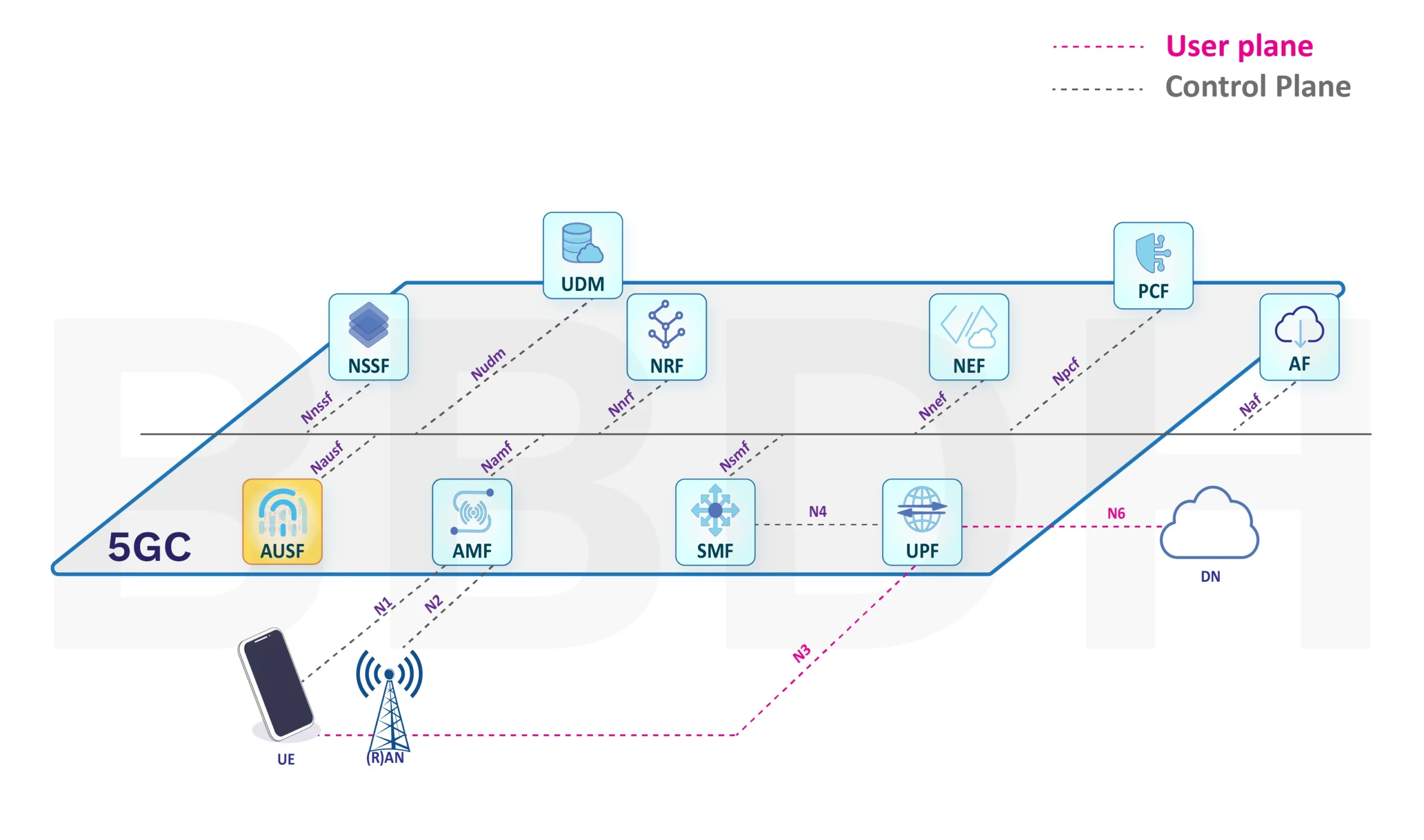
Authentication Server Function (AUSF)
AUSF In the context of 5G networks, AUSF stands for Authentication Server Function (AUSF). It is a critical network function within the 5G Core (5GC) architecture responsible for authentication, authorization, and key management for subscribers accessing the 5G network. Here’s a detailed description of AUSF and its functions:
- Authentication and Authorization: The AUSF is responsible for authenticating and authorizing users who want to access the 5G network. It validates the identity of the user, ensuring that they have the necessary credentials and permissions to access the network.
- Security Functions: AUSF is involved in implementing security functions such as generating and validating security keys for secure communication between the user equipment (UE) and the network. These keys are crucial for establishing secure communication sessions.
- Subscription Information Handling: AUSF manages subscription-related information for each user, including authentication data, security keys, and user profile data. It retrieves and processes this information to enable secure access and services for the user.
- Interactions with Other Functions: AUSF interacts with various network functions within the 5G Core, including the Authentication Management Function (AMF) and the Unstructured Supplementary Service Data (USSD) Function, to facilitate authentication processes and ensure a seamless user experience.

- Dynamic Policy Management: NEF supports dynamic policy management, enabling real-time adaptation and enforcement of policies based on changing network conditions, user behavior, or other contextual factors. This flexibility ensures efficient resource utilization and responsiveness to varying service demands.
- Service Orchestration and Composition: NEF aids in the orchestration and composition of services by allowing external applications to request specific network services or compose new services by combining existing functionalities. This fosters service innovation and the development of diverse applications tailored to different use cases.
- Data Privacy and Security: AF collaborates with various network functions within the 5GC, such as SMF (Session Management Function), UPF (User Plane Function), and others, to ensure seamless communication and interaction with applications and their corresponding services.
- Integration with Core Network Functions: NEF integrates with various core network functions, such as the Authentication and Authorization Function (AAF), Unified Data Management (UDM), and the Policy Control Function (PCF), to coordinate policy decisions and ensure seamless functionality across the network.
In summary, the Network Exposure Function (NEF) is a critical component of the 5G architecture, enabling controlled and standardized access to network resources and information through APIs. It promotes innovation, service customization, and efficient utilization of the 5G network while maintaining data privacy and security.

 Search
Search